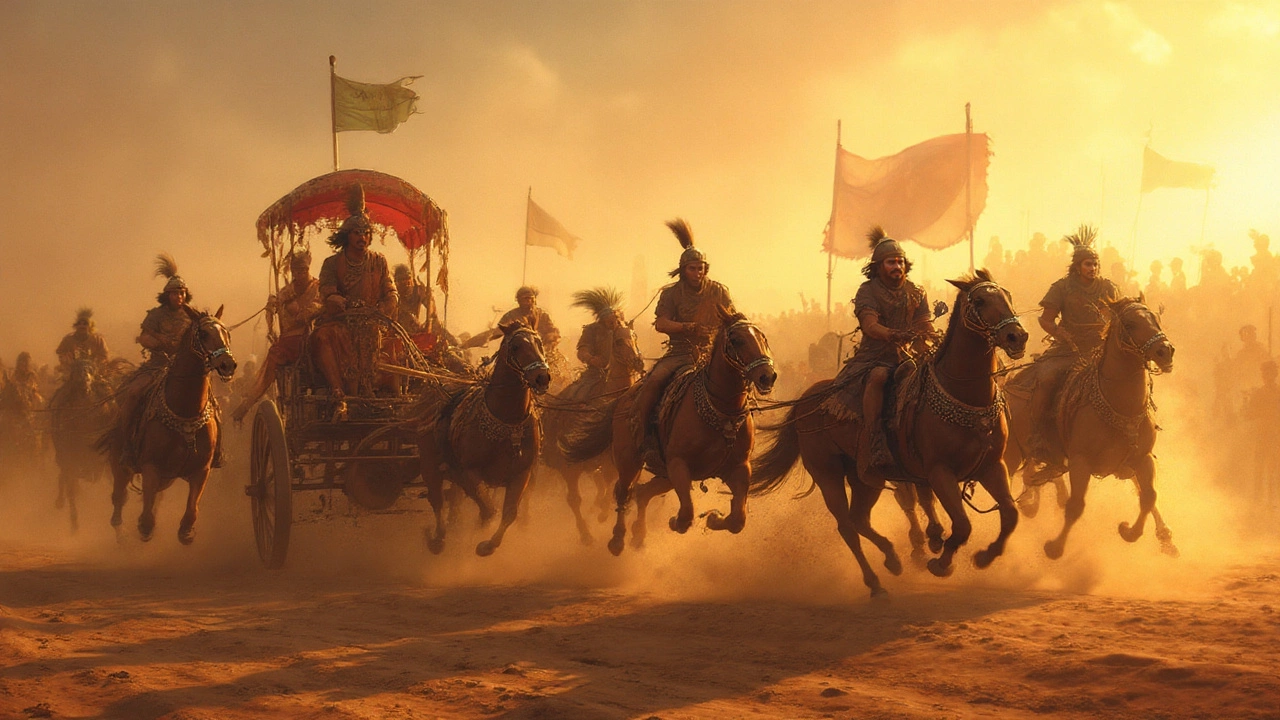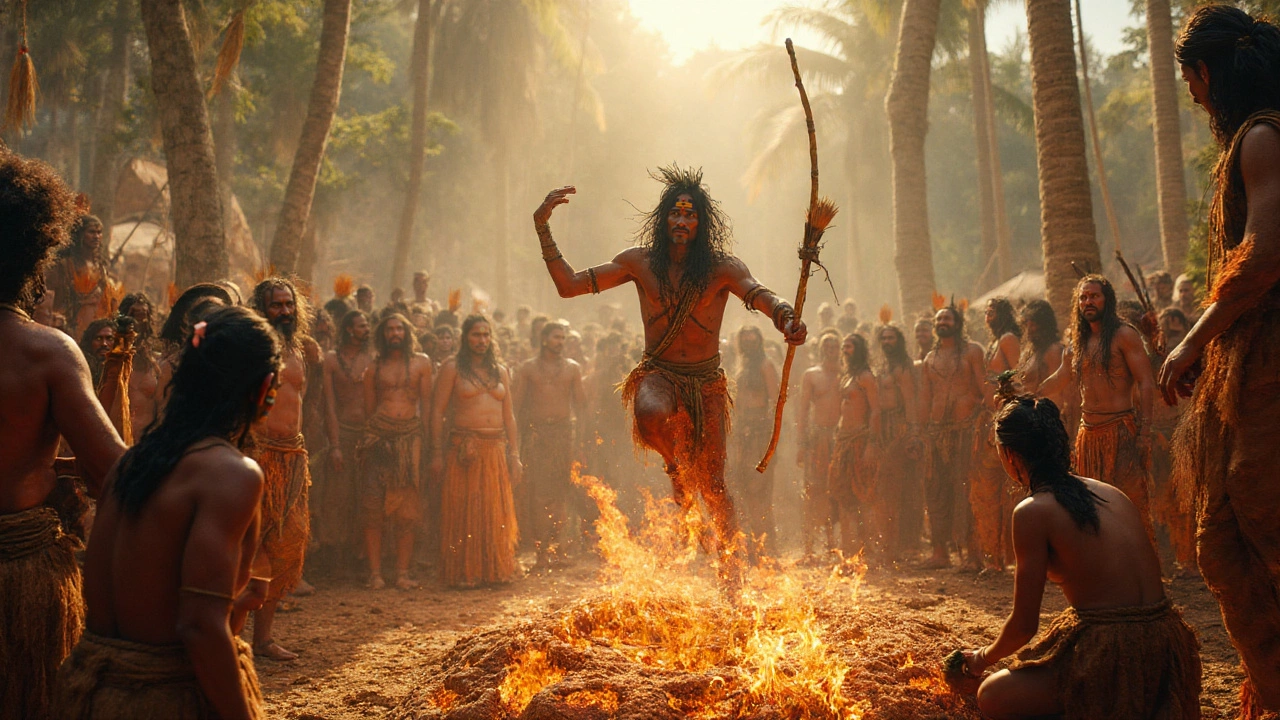If you think surfing monster waves or jumping off skyscrapers is as wild as it gets, you should peek into the past. Life was a real adrenaline rush long before Red Bull and GoPro came along. Turns out, chasing thrills is part of what makes us human. Ancient civilizations flirted with danger in some jaw-dropping ways—sometimes for sport, sometimes for ritual, and sometimes just to prove they could.
The Roots of Human Adrenaline: What Counts as an Extreme Sport?
The first thing to tackle: what are we even calling “extreme” here? The term gets tossed around a lot today, but the basic idea is still about high risk, big consequences, and adrenaline—the kind of rush that makes you feel alive. Even thousands of years back, people were drawn to activities that mixed danger and skill. No, nobody was base jumping with a wingsuit, but the spirit was the same. Actually, some of the world’s earliest extreme sports were about way more than fun—think proving bravery, settling tribal scores, or even impressing the gods.
There’s evidence humans were into risky sports way before written history. Take cliff diving in Acapulco, for instance—one of the oldest surviving examples of humans risking it all for a thrill. But if you really want to dig deep, you have to look at sports like chariot racing in ancient Rome and Greece, or the savage ritual ball games played in Central America as far back as 1400 BCE. These were brutal, sometimes fatal, but always exhilarating. And unlike today’s stadium events, these games could decide the fate of tribes or honor the sun god himself.
Some archaeologists point to wrestling and boxing depicted in Sumerian and Egyptian art, thousands of years BC, but while rough, these don’t quite cross into “extreme” territory compared to, say, leaping off a cliff. Yet, it’s worth noting—what was considered risky or extreme back then is a little different. For regular folks back then, daily life was risky enough, so showing you could face extra danger set you apart.
Then there’s bull-leaping—yes, actual people vaulting over charging bulls. This Minoan ritual goes back to at least 2000 BCE on the island of Crete. Historians think it combined athleticism, guts, and a good dose of luck, and it was probably as much a religious festival as a test of nerve.
Meanwhile, horse riding and racing were pushing limits worldwide. The Central Asian horse cultures practically invented fearlessness on horseback, and their skills got mythologized in legends. Chariot racing, on the other hand, was the NASCAR of the ancient world—a dangerous, high-speed spectacle with fame and fortune for the winners and brutal crashes for the losers.
Even in ancient China, dangerous forms of polo and mounted archery put riders to the test. Japan’s samurai culture also trained in ways that bordered on the extreme, practicing horseback archery and stealth, sometimes even as shadowy demonstrations for rulers and warriors alike.
Here's a quick look at when and where some of these early extreme sports got going:
| Sport/Activity | Region | Estimated Era | Key Risk Factor |
|---|---|---|---|
| Bull-leaping | Crete (Minoan Civilization) | 2000 BCE+ | Direct contact with live bulls |
| Chariot Racing | Greece and Rome | 600 BCE+ | High-speed collisions and deadly crashes |
| Cliff Diving | Mexico (Acapulco) | Mid-16th Century CE | Risk of injury from water impact |
| Mesoamerican Ballgame | Mesoamerica | 1400 BCE+ | Physical collision; ritual sacrifice |
The oldest of all might be bull-leaping, considering how far back it goes in the ancient record. But in the end, what ties all these together is the human urge to push limits—even in sandals and loincloths.

Ancient Risks, Modern Parallels: How Old Extreme Sports Shaped Today
Let’s be real—today’s “extreme sports” culture didn’t just pop up. Every time you see someone free soloing a rock face or chasing a massive barrel wave, you’re looking at the next chapter of a story that started thousands of years ago. The same thirst for thrill, the testing of human limits, the cheers from the crowd—it’s ancient, and it’s in our DNA.
If you compare the techniques, some old ideas are still surprisingly effective. For example, the precise timing needed in bull-leaping (as crazy as it sounds) isn’t that different from how pro skateboarders or BMX riders nail their jumps—it comes down to intuition, practice, and a little luck. Chariot racing, with its high stakes and need for quick reflexes, set the groundwork for the kind of gutsy moves you’d now see in Formula 1 or motocross. You could even argue that crowd energy is half the sport—the bigger the gasp, the harder the competitors pushed themselves.
Even more, these ancient sports didn’t just build up individuals—they knitted whole cultures together. Chariot races in Rome pulled huge crowds; it’s estimated that up to 250,000 people crammed into the Circus Maximus for the biggest matches. Imagine four times the crowd of the Super Bowl, every seat shaking as the chariots thunder past. The risk wasn’t just for the athletes, either. Sometimes things got so out of hand that riots broke out, and damage spilled into the streets.
The psychological kick people got from watching or competing hasn’t changed. Fans of the Mesoamerican ballgame cheered like their lives depended on it—sometimes because they literally did. Losing teams could face ritual sacrifice, which adds a whole new meaning to “sudden death overtime.”
Here are a few tips and lessons modern-day thrill-seekers might snag from the ancients:
- Train till the moves are second nature. Ancient athletes had no margin for error—practice wasn’t optional.
- Respect the danger. Where there’s risk, there’s also ceremony and preparation. Rituals served as mental prep before big events, something modern sports psychology circles back to now.
- Understand your limits. Ancient competitors were often elite, trained from childhood. Pushing boundaries means knowing where yours are first.
- Gear up, old-school or not. Chariot racers wore reinforced armor, bull-leapers wrapped their hands and wore special belts—ancient tech, but the principle of safety-first holds true.
- Make it about more than ego. Extreme sports weren’t just solo missions; they were public, communal—sometimes sacred. The lesson? Look for the bigger purpose in what you do.
Stats show us the appetite for watching others face risk hasn’t faded, either. In 2024 alone, over 1.2 billion people tuned in to at least one extreme sports event online, according to Statista. That’s digital-age Roman circus stuff—humans still crave the rush, whether from the stands or behind a screen.
So, while modern extreme sports have all the branding and sponsorships, the basic drive isn’t so different from what fueled those ancient heroes and risk-takers. In fact, you could say the very first “extreme” sport started when someone realized leaping over a bull or racing a chariot caught the whole village’s attention. And that drive hasn’t let up since.

What the Ancients Teach Us: Lasting Impacts and Lessons for Today
Zeroing in on the oldest extreme sport isn’t just trivia—it reveals how our love for adventure and pushing boundaries has shaped who we are. These early adrenaline adventures didn’t just entertain; they taught lessons about bravery, training, community, and even spirituality. The stakes could be life or death, so respect for danger became part of the culture. If ancient thrill-seekers could pop back into 2025, they’d probably recognize the look in the eyes of a BMX daredevil about to launch off a 40-foot ramp.
There’s another angle here: old-school extreme sports were also about ritual and rites of passage. In many cultures, you weren’t considered an adult or warrior material until you faced something that could kill you. Whether it was the bull-leaping youths of Crete or the Aztec ballplayers, extreme sports doubled as tests for leadership and honor. Even now, joining the elite ranks of BASE jumpers, free divers, or street luge champs has an initiation vibe to it; you earn respect only by taking the risk and surviving.
Modern adventure sports owe a lot to these early heroes. Safety has improved—thankfully, you probably won’t end up a human sacrifice if you blow a skateboarding trick. But the structure of dedication, spectacle, and community lives on. Modern tips for chasing adrenaline? Preparation and respect are everything. Don’t skip the groundwork, whether you’re just learning to kitesurf or planning your first skydiving trip.
Extreme sports have gone global, thanks to streaming, VR, and video. But at heart, nothing beats the simple rush. Ancient spectators might not have had TikTok, but they understood the thrill of betting on the outcome, the sad drama when things went wrong, and the joy when someone pulled off the impossible.
One thing’s clear: humans have always chased ways to flirt with danger and prove what they’re made of. These ancient sports weren’t just fights for survival—they were about joy, pride, and belonging. Even the risk became a kind of celebration. So next time you watch a highlight reel of someone pulling a backflip on a dirt bike or free diving into a blue hole, remember—they’re carrying a torch that started burning back in the age of labyrinths, sun gods, and ancient arenas. Danger, skill, and the cheering crowd? That’s older than history itself.
